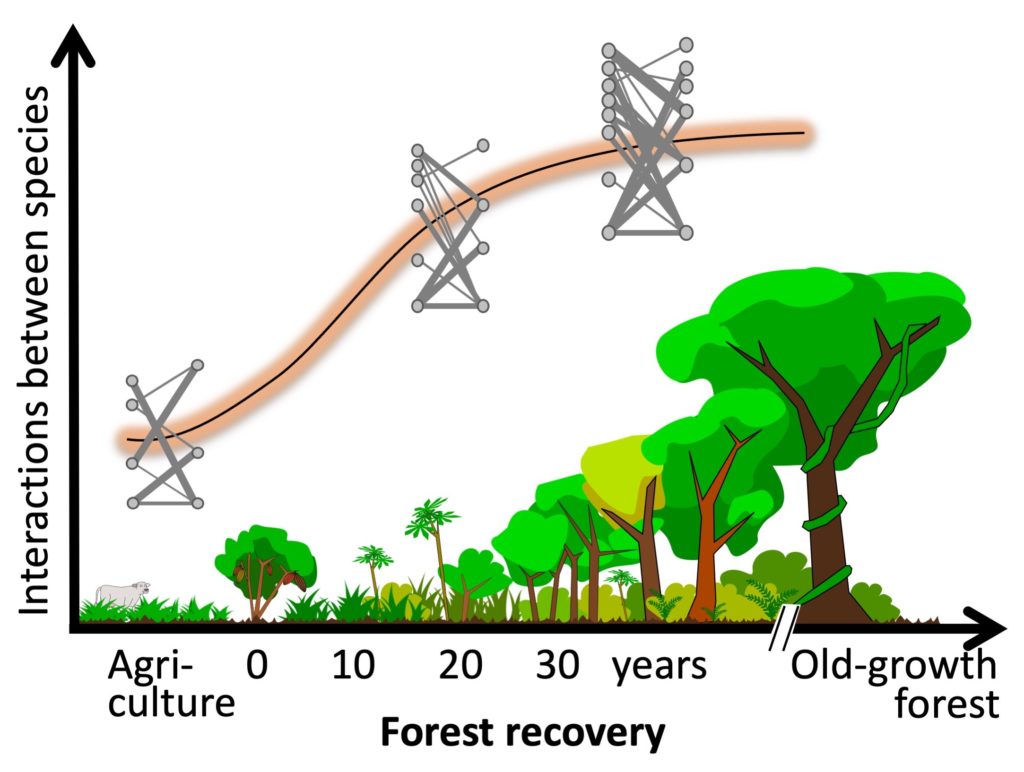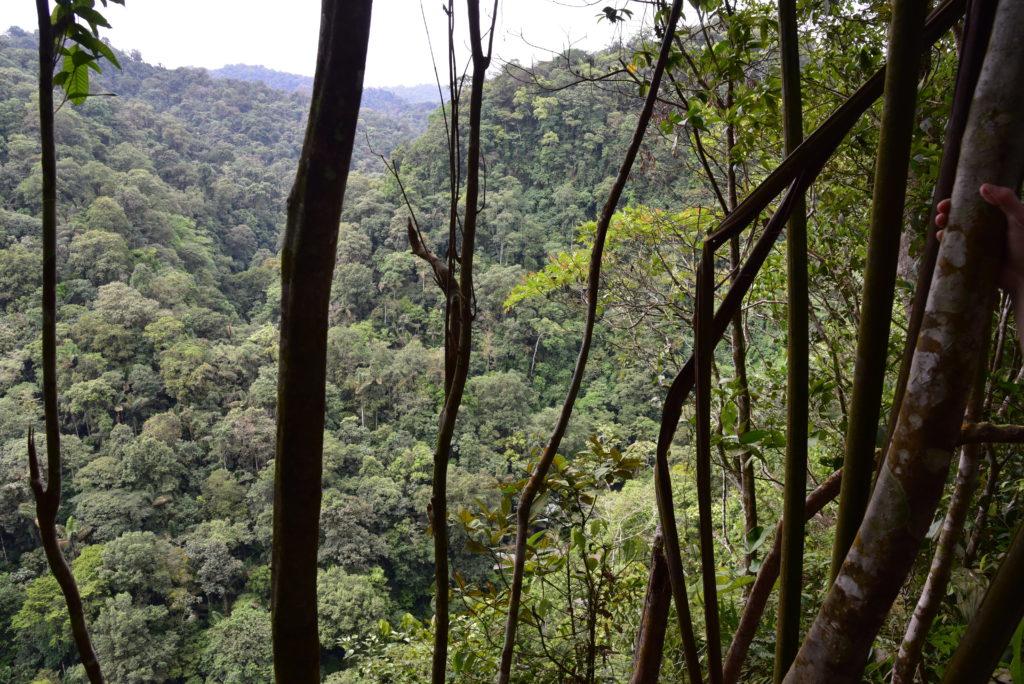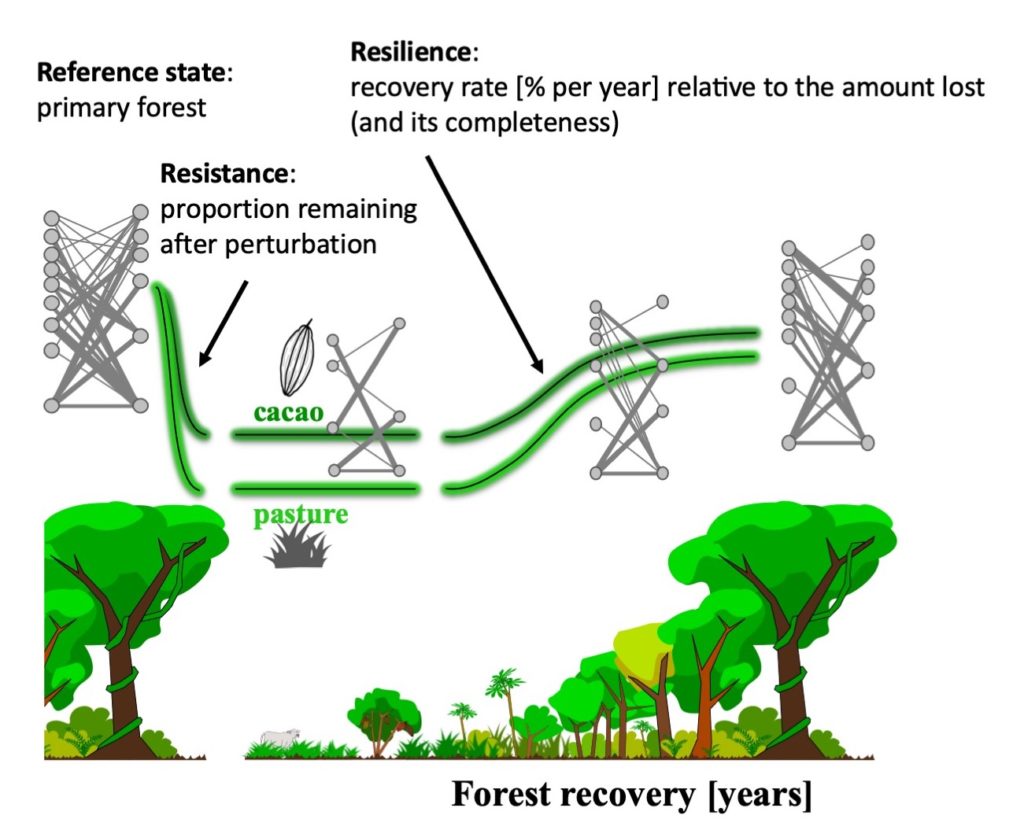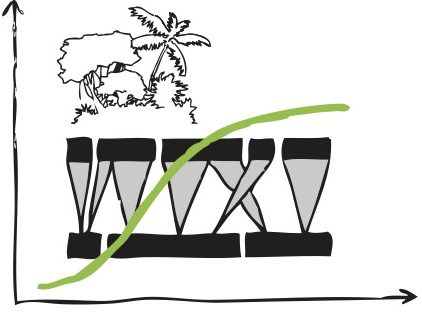We investigate forest sites recovering for different time spans from a former use as pasture or plantation (= a chronosequence) to assess and compare the reassembly of interaction networks and trajectories of ecosystem processes. We quantify the effects of functional traits that are predicted to be important for network reassembly and resilience to perturbations: response traits to environmental conditions, and interaction traits as determinants of network links. Analysing the relative contribution of these traits across distinct ecological processes allows us to distil dis- and reassembly rules of forest recovery. The complexity of newly composed networks with forest recovery is predicted to increase the overall rate and resilience of ecosystem processes. To test this hypothesis, we performed a perturbation-recovery experiment (P-REX) along the chronosequence. Overall, our research unit will unravel how, to what extent, and how fast a forest ecosystem can re-establish after deforestation, including the diverse species communities, complex interaction networks, and relevant processes that characterize such forest ecosystems.
Predicted increase in network complexity with the age of recovering forests:


We study…
- the impacts of agricultural land use (pastures and cacao plantations) to characterize the resistance of networks against deforestation,
- the dynamics of natural forest recovery from agriculture along a chronosequence, and
- the contribution of re-assembled networks to the resilience of ecosystem processes against perturbation.


Across all subprojects and taxa, we aim to distinguish functional traits to disentangle mechanisms underlying the roles of species in the resistance and reassembly of interactions. Response traits represent species-specific properties that predict a species’ response to the environment, e.g. the probability of occurrence or activity under certain conditions. Interaction traits predict a species’ probability to interact with specific resources or partners, or their vulnerability to natural enemies. Hence, an important challenge in the context of this project is to define and quantify response traits to explain each species’ resistance to perturbation or its success in plantations and pastures, or its reassembly during forest recovery, and to investigate rules for interaction traits in predicting network structure and dynamics.

